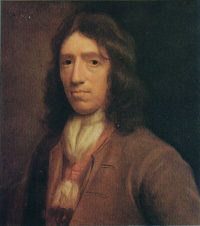OF THE PHILIPPINE ISLANDS.
The 21st day of June we arrived at the island St. John, which is one of the Philippine Islands. The Philippines are a great company of large islands, taking up about 13 degrees of latitude in length, reaching near upon from 3 degrees of north latitude to the 19th degree, and in breadth about 6 degrees of longitude. They derive this name from Phillip II, King of Spain; and even now do they most of them belong to that crown.
THE ISLE LUCONIA, AND ITS CHIEF TOWN AND PORT, MANILO, MANILA, OR
MANILBO.
The chiefest island in this range is Luconia, which lies on the north of them all. At this island Magellan died on the voyage that he was making round the world. For after he had passed those straits between the south end of America and Tierra del Fuego which now bear his name, and had ranged down in the South Seas on the back of America; from thence stretching over to the East Indies, he fell in with the Ladrone Islands and from thence, steering east still, he fell in with these Philippine Islands and anchored at Luconia; where he warred with the native Indians to bring them in obedience to his master the king of Spain, and was by them killed with a poisoned arrow. It is now wholly under the Spaniards who have several towns there. The chief is Manila, which is a large sea-port town near the south-east end, opposite to the island Mindoro. It is a place of great strength and trade: the two great Acapulco ships before mentioned fetching from hence all sorts of East India commodities which are brought hither by foreigners, especially by the Chinese and the Portuguese. Sometimes the English merchants of Fort St. George send their ships hither as it were by stealth under the charge of Portuguese pilots and mariners: for as yet we cannot get the Spaniards there to a commerce with us or the Dutch, although they have but few ships of their own. This seems to arise from a jealousy or fear of discovering the riches of these islands, for most if not all the Philippine Islands are rich in gold: and the Spaniards have no place of much strength in all these islands that I could ever hear of besides Manila itself. Yet they have villages and towns on several of the islands, and padres or priests to instruct the native Indians from whom they get their gold.
OF THE RICH TRADE WE MIGHT ESTABLISH WITH THESE ISLANDS.
The Spanish inhabitants of the smaller islands especially would willingly trade with us if the government was not so severe against it: for they have no goods but what are brought from Manila at an extraordinary dear rate. I am of the opinion that if any of our nations will seek a trade with them they would not lose their labour; for the Spaniards can and will smuggle (as our seamen call trading by stealth) as well as any nation that I know; and our Jamaicans are to their profit sensible enough of it. And I have been informed that Captain Goodlud of London, in a voyage which he made from Mindanao to China, touched at some of these islands and was civilly treated by the Spaniards who bought some of his commodities, giving him a very good price for the same.
There are about 12 or 14 more large islands lying to the southward of Luconia; most of which, as I said before, are inhabited by the Spaniards. Besides these there are an infinite number of small islands of no account, and even the great islands, many of them, are without names; or at least so variously set down that I find the same islands named by divers names.
The island St. John and Mindanao are the southermost of all these islands and are the only islands in all this range that are not subject to the Spaniards.
ST. JOHN’S ISLAND.
St. John’s Island is on the east side of the Mindanao and distant from it 3 or 4 leagues. It is in latitude about 7 or 8 north. This island is in length about 38 leagues, stretching north-north-west and south-south-east, and it is in breadth about 24 leagues in the middle of the island. The northermost end is broader, and the southermost is narrower: this island is of a good height and is full of many small hills. The land at the south-east end (where I was ashore) is of a black fat mould; and the whole island seems to partake of the same fatness by the vast number of large trees that it produces; for it looks all over like one great grove.
As we were passing by the south-east end we saw a canoe of the natives under the shore; therefore one of our canoes went after to have spoken with her; but she ran away from us, seeing themselves chased, put their canoe ashore, leaving her, fled into the woods; nor would be allured to come to us, although we did what we could to entice them; besides these men we saw no more here nor sign of any inhabitants at this end.
